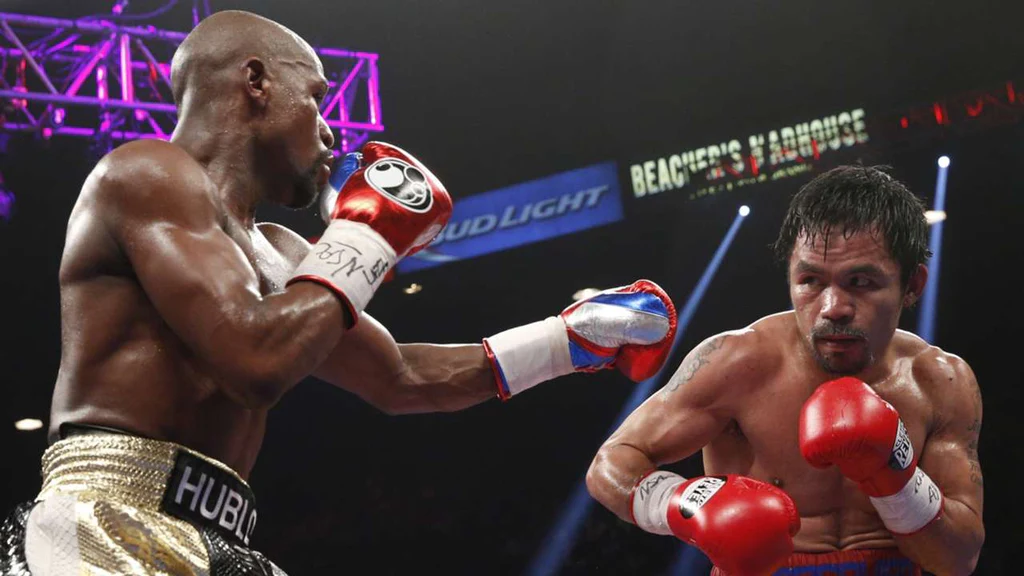Boxing weight divisions exist to create fairness in the ring. They ensure that no fighter enters a match at a serious physical disadvantage purely because of natural body size differences. Someone weighing 112 pounds should not have to fight someone weighing 154 pounds, just as someone born naturally compact and agile should not be forced to withstand the punching power of a larger, heavier, stronger opponent. The purpose of weight divisions is not simply fairness it is the preservation of skill, strategy, and athletic competition as the defining elements of boxing. When people search for information on boxing weight divisions, they are often looking for clarity, structure, and a sense of how these divisions shape the sport. This article provides that explanation, and does so in clear, contemporary, deeply informed language.
To understand boxing, one must understand weight divisions. They are the skeleton framework of every fight card, every title belt, every prospect’s journey, every champion’s reign. They tell you not only what kind of fighters compete but also what type of fights you are likely to see. Lighter divisions often emphasize high-speed footwork and rapid punch output, while heavier divisions trend toward knockout power and controlled pacing. What is less commonly discussed and what this article explores is how these divisions evolved, why the sport maintained certain divisions while adjusting others, and how men’s and women’s divisions differ in subtle but meaningful ways. The modern boxing landscape has been shaped by globalization, television broadcast eras, the rise of sanctioning bodies, and the growth of women’s professional boxing. This means that weight divisions are not only athletic categories but also cultural timelines that reflect the sport’s political and commercial evolution. Understanding them gives a deeper understanding of boxing itself.
How Weight Matters in Boxing
At its core, boxing is the study of controlled force applied with precision. Weight affects force. Larger athletes can typically generate more power especially in hooks and uppercuts and can better absorb impact. Smaller athletes often rely on endurance, volume, and rapid angular movement. The weight division system allows fighters to train toward peak natural performance rather than distorting their bodies dangerously to match mismatched opponents. Weight also shapes fighting style. A lightweight bout tends to look fast, fluid, and filled with footwork exchanges. A heavyweight bout may feature more measured pacing and a high likelihood of sudden momentum shifts caused by a single punch. This diversity of stylistic profiles is part of what makes boxing captivating across different divisions.
The public perception of boxing historically focused heavily on heavyweights the era of Muhammad Ali, Joe Frazier, Mike Tyson, Lennox Lewis, Wladimir Klitschko, and now Tyson Fury and Oleksandr Usyk. Yet some of the most technically brilliant fighters people like Manny Pacquiao, Floyd Mayweather, Vasyl Lomachenko, and Amanda Serrano made their legacies in lower-weight divisions. Recognizing the full spread of divisions allows fans to appreciate boxing beyond the stereotypical “power punch spectacle.”
Table of Men’s and Women’s Professional Boxing Weight Divisions
Below is a clear, simplified table that includes both men’s and women’s divisions, noting that some naming variations exist across sanctioning organizations. The weights listed refer to upper limits in pounds (lb) and kilograms (kg).
| Division Name | Men’s Limit (lb/kg) | Women’s Limit (lb/kg) | Typical Style Characteristics |
|---|---|---|---|
| Minimumweight (Strawweight) | 105 lb / 47.6 kg | 102–105 lb / 46–47.6 kg | Speed-focused, high punch volume, light on feet |
| Light Flyweight | 108 lb / 49 kg | 106–108 lb / 48–49 kg | Technical precision, counterpunch-heavy |
| Flyweight | 112 lb / 50.8 kg | 110–112 lb / 49.9–50.8 kg | Balanced mix of speed and timing |
| Super Flyweight | 115 lb / 52.1 kg | 114–115 lb / 51.7–52.1 kg | Strategic rhythm control, angle-based exchanges |
| Bantamweight | 118 lb / 53.5 kg | 116–118 lb / 52.6–53.5 kg | Crisp combinations, tight defensive posture |
| Super Bantamweight | 122 lb / 55.3 kg | 120–122 lb / 54.4–55.3 kg | High tactical IQ, inside-outside footwork |
| Featherweight | 126 lb / 57.1 kg | 124–126 lb / 56.2–57.1 kg | Balanced athleticism and punch variety |
| Super Featherweight | 130 lb / 59 kg | 128–130 lb / 58–59 kg | Dynamic exchanges, frequent momentum shifts |
| Lightweight | 135 lb / 61.2 kg | 132–135 lb / 59.8–61.2 kg | Historically deep division, elite skill diversity |
| Super Lightweight | 140 lb / 63.5 kg | 136–140 lb / 61.7–63.5 kg | Ring generalship becomes more decisive |
| Welterweight | 147 lb / 66.7 kg | 142–147 lb / 64.4–66.7 kg | Strong balance of power and finesse |
| Super Welterweight | 154 lb / 69.9 kg | 148–154 lb / 67.1–69.9 kg | More physical pressure-based styles emerge |
| Middleweight | 160 lb / 72.5 kg | 155–160 lb / 70.3–72.5 kg | Power meets technical mid-range fighting |
| Super Middleweight | 168 lb / 76.2 kg | 161–168 lb / 73–76.2 kg | Strength emphasis, tactical pacing |
| Light Heavyweight | 175 lb / 79.4 kg | 169–175 lb / 76.6–79.4 kg | Strong jab presence, measured punch setups |
| Cruiserweight | 200 lb / 90.7 kg | 176–200 lb / 79.8–90.7 kg | High knockout risk with mid-range mobility |
| Heavyweight | Unlimited (200+ lb / 90.7+ kg) | Unlimited (200+ lb / 90.7+ kg) | Power-dominant, unpredictable outcomes |
The Evolution of Weight Divisions Over Time
Weight divisions were not always as finely divided as they are today. In boxing’s earlier eras even as recently as the 1940s fewer divisions existed, and fighters often jumped significant weight gaps. This sometimes forced fighters into mismatched contests where survival instincts overshadowed skill. As the sport professionalized and athletes began training year-round rather than seasonally, more divisions emerged to allow fighters to refine performance at more precise body compositions. The inclusion and formalization of women’s divisions grew significantly in the 1980s, accelerated by the 1990s, and gained cultural traction in the 2010s with fighters like Laila Ali, Claressa Shields, Katie Taylor, and Amanda Serrano becoming global champions. Women’s boxing now has structured divisions parallel to men’s, though certain weight categories see different participation levels due to demographic distribution of natural body sizes.
How Boxers Choose Their Division
A fighter’s natural walking weight, frame thickness, reach, metabolism, and training discipline determine their optimal division. Some fighters “cut weight” aggressively to gain size advantage against smaller natural opponents, though extreme cutting can harm long-term health. Others move up divisions as they age, since metabolism slows and muscle density increases. Strategies differ. Some fighters stay in one division their entire career; others build legacies across multiple divisions.
The Cultural Meaning of Weight Divisions
Weight divisions offer identity. Fans often attach stylistic expectation to divisions. Featherweights are fast. Welterweights are well-rounded. Heavyweights are dramatic and destructive. The divisions create narrative categories story arcs that define how fans interpret greatness.
Conclusion
Boxing weight divisions are not simply numbers on a scale. They are the architecture of fairness, strategy, identity, and competitive storytelling in the sport. By including both men’s and women’s divisions, the sport expands in representation and nuance, allowing diverse body types and athletic styles to flourish. Understanding these divisions deepens appreciation for boxing itself its balance of art and science, calculation and chaos, power and elegance.










